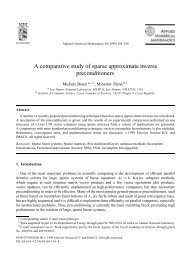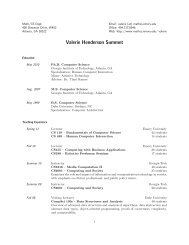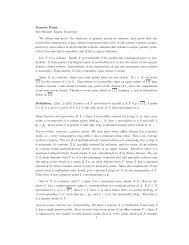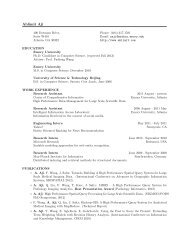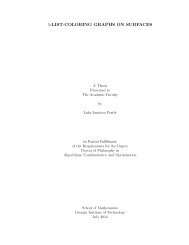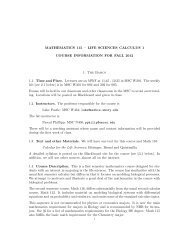Chapter 3 Solution of Linear Systems - Math/CS
Chapter 3 Solution of Linear Systems - Math/CS
Chapter 3 Solution of Linear Systems - Math/CS
You also want an ePaper? Increase the reach of your titles
YUMPU automatically turns print PDFs into web optimized ePapers that Google loves.
76 CHAPTER 3. SOLUTION OF LINEAR SYSTEMS<br />
• Using array operations, the backward substitution step can be implemented as:<br />
for i = n:-1:1<br />
x(i) = (b(i) - A(i,i+1:n)*x(i+1:n)) / A(i,i);<br />
end<br />
Note that here the statement<br />
for i = n:-1:1<br />
indicates that the loop runs over values i = n, n − 1, . . . , 1.<br />
• The next question we must address is how to implement a check for singularity. Due to round<strong>of</strong>f<br />
errors, it is unlikely that any akk will be exactly zero, and so the statement<br />
if A(k,k) == 0<br />
is unlikely to detect singularity. An alternative approach is to see if akk is small compared to,<br />
say, the largest entry in the matrix A. Such a test could be implemented as follows:<br />
if abs(A(k,k)) < tol<br />
where tol is computed in an initialization step, such as:<br />
tol = eps * max(abs(A(:)));<br />
Here, the command A(:) reshapes the matrix A into one long vector, and max(abs(A(:)))<br />
finds the largest entry. See help max to learn why we did not simply use max(abs(A)).<br />
• Finally, we note that, in addition to tol, certain initialization steps are needed. For example,<br />
we need to know the dimension, n, and we should allocate space for the solution vector and<br />
for the multipliers. We can do these things using the length, zeros, and eye functions:<br />
n = length(b);<br />
x = zeros(n,1);<br />
m = eye(n);<br />
Putting these steps together, we obtain the following function that uses Gaussian elimination with<br />
partial pivoting to solve Ax = b.



